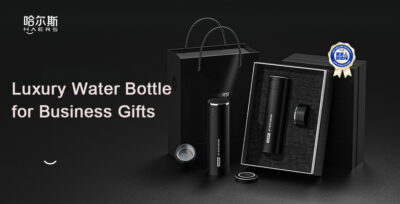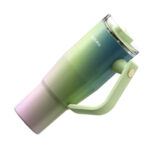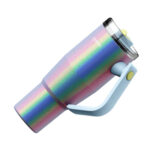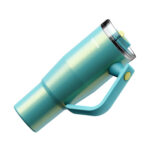What’s the Difference Between SUS304 and 18/8 Stainless Steel?
Stainless steel insulated bottles have grown in popularity, especially when shopping online. But many people get confused by different terms like “304 stainless steel,” “SUS 304,” and “18/8 stainless steel.” What do these labels actually mean? Are they just marketing buzzwords, or do they really reflect the quality of the material? And some new startups that are looking for bulk water bottles may have the same wonders.
Table of Contents
ToggleWhat Is 18/8 Stainless Steel?
18/8 stainless steel is a type of stainless steel with a specific ratio of metal elements. The “18” stands for approximately 18% chromium (Cr), and the “8” stands for around 8% nickel (Ni). This combination gives 18/8 stainless steel its outstanding strength, corrosion resistance, and durability.
Chromium is key to corrosion resistance. When exposed to air, it reacts with oxygen to form a thin, strong layer of chromium oxide on the surface. This protective film helps block moisture, oxygen, and other corrosive substances from penetrating the material, making 18/8 stainless steel resistant to rust, even in humid or acidic environments.
Nickel enhances the toughness and corrosion resistance of the steel. It improves the material’s strength without making it too brittle, allowing it to be easily shaped and manufactured into various products. Thanks to this toughness, 18/8 stainless steel can withstand everyday impacts and deformation without cracking or breaking.
Because of the synergy between chromium and nickel, 18/8 stainless steel is considered food-safe, non-toxic, and highly durable. It meets strict food contact standards and is widely used in kitchenware, tableware, and insulated bottles—anywhere safety and hygiene are a must. It doesn’t leach harmful substances into beverages or food, giving consumers peace of mind.
The name “18/8 stainless steel” also has historical roots. In 1924, William Herbert Hatfield of the Firth Brown laboratory in the UK developed the first austenitic stainless steel with 18% chromium and 8% nickel by improving the earlier “V2A” alloy. This material was introduced at an ASTM meeting in the U.S. the same year and began commercial production in 1927. Before stainless steel grades were standardized, “18-8” was a common trade name used by steel companies. It wasn’t until the 1930s that the American Iron and Steel Institute (AISI) assigned it the official grade number: Type 304 stainless steel.
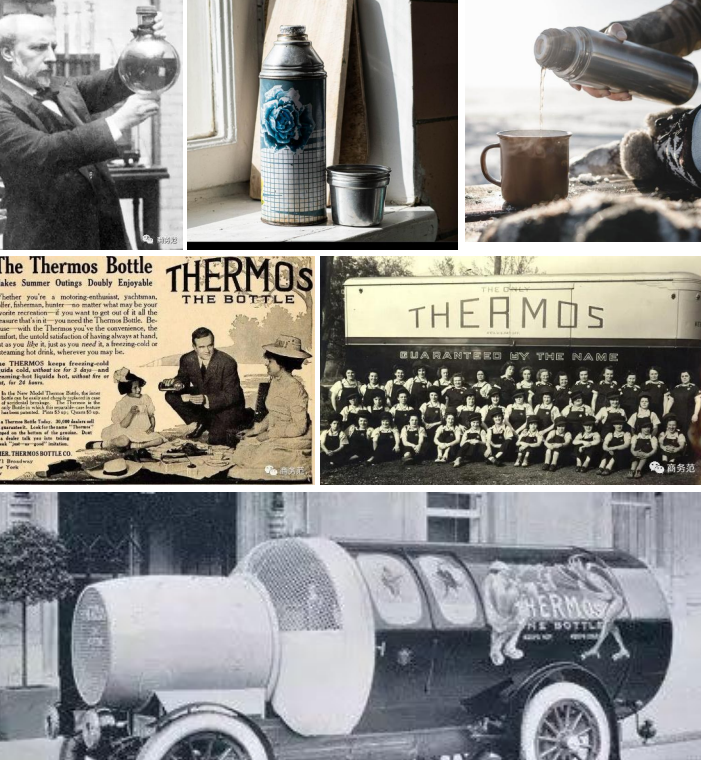
What Is 304 Stainless Steel?
304 stainless steel is an austenitic stainless steel defined by the American Society for Testing and Materials (ASTM). It is officially listed under the ASTM A240 standard and is one of the most commonly used grades in the American Iron and Steel Institute (AISI) classification system. The number “304” is not a random code—it represents a specific category of stainless steel with a defined chemical composition and performance profile, typically containing around 18% chromium (Cr) and 8% nickel (Ni).
Due to its similar chromium-nickel ratio, 304 stainless steel shares many of the same benefits as 18/8 stainless steel. It offers excellent corrosion resistance, high durability, and long-term stability in a wide range of environments. That’s why it is widely used in the manufacturing of kitchen appliances, food-grade containers, insulated bottles, and other products that come into direct contact with food and beverages.
For brand retailers and consumers, the “304 stainless steel” label is a clear indicator of quality. It signifies that the material meets international safety standards, including those of the U.S. Food and Drug Administration (FDA), for food contact materials. When a product is marked as made from 304 stainless steel, it assures users that it is safe for daily use and will not pose health risks over time.
What Is SUS 304?
SUS 304 is a specific grade of stainless steel defined under the Japanese Industrial Standards (JIS). It is widely used in both industrial and consumer products across the globe. In this naming system, “SUS” stands for “Stainless Steel” and is the standard prefix used in the JIS system for stainless materials. The number “304” refers to the material type, which corresponds directly to ASTM 304 stainless steel in the U.S. and the internationally recognized 18/8 stainless steel. All three—SUS 304, 304 stainless steel, and 18/8 stainless steel—share the same chemical composition: approximately 18% chromium and 8% nickel.
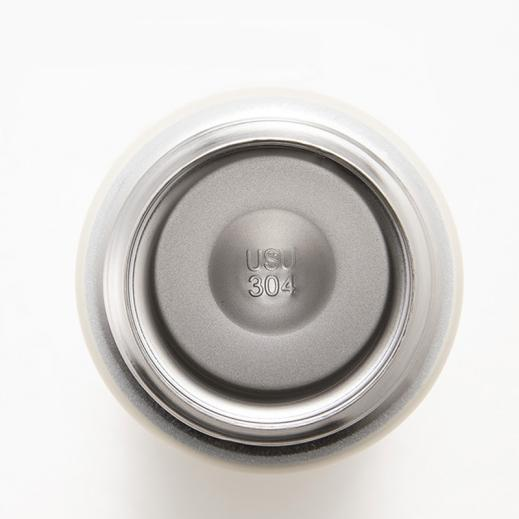
In terms of real-world applications, SUS304 stainless steel is trusted for use in products that come into direct contact with food and beverages. It meets the safety standards set by Japan’s Ministry of Health, Labour and Welfare (MHLW), ensuring it is free from harmful heavy metals like lead or cadmium. When consumers see a product labeled “SUS 304,” it means the material has passed strict safety testing and will not release toxic substances under normal use—making it a reliable, health-conscious choice.
Are There Other Types of 304 Stainless Steel?
As one of the most widely used types of austenitic stainless steel worldwide, 304 stainless steel has a highly consistent chemical composition and performance standard. However, due to differences in regional standards, industry practices, and labeling habits, it may appear under various alternative names. These are not different materials in essence, but simply different designations for the same type of stainless steel—namely, the internationally recognized 18/8 chromium-nickel stainless steel.
Under the ISO 3506-1 international standard, 304 stainless steel is listed as X5CrNi18-10. While the nickel content is slightly higher (around 10% Ni) compared to the typical ASTM version, the core properties remain the same, and it is commonly used in global engineering and fastener applications.
In Europe, 304 stainless steel is identified by the grade 1.4301, according to the European Committee for Standardization (CEN). This classification emphasizes precise chemical composition and mechanical performance and is widely adopted across the EU and Eastern European countries.
In China’s national standard system (GB), 304 stainless steel is referred to as 06Cr19Ni10. In this naming convention, “06” indicates a carbon content of no more than 0.08%, while “19” and “10” represent the minimum content of chromium and nickel respectively. This label focuses on detailed composition requirements and is commonly used in domestic manufacturing.
All these different names refer to the same material under different standards and regions. They do not imply any fundamental difference in quality. That said, there are a few recognized sub-grades of 304 stainless steel based on slight variations in carbon or nitrogen content, such as:
- 304L – low carbon version, better suited for welding applications
- 304H – high carbon version, for higher temperature strength
- 304N – nitrogen-enhanced for improved strength
These variants are mainly used in industrial or engineering-specific contexts and are not typically found in consumer products. Their chromium and nickel ratios still fall within the 18/8 range.
So for everyday items like insulated bottles, tableware, and kitchen tools, labels such as 304, SUS 304, and 18/8 stainless steel all point to the same reliable, food-safe material. Consumers don’t need to worry about the naming difference—it’s just a reflection of different industrial systems and naming traditions around the world.
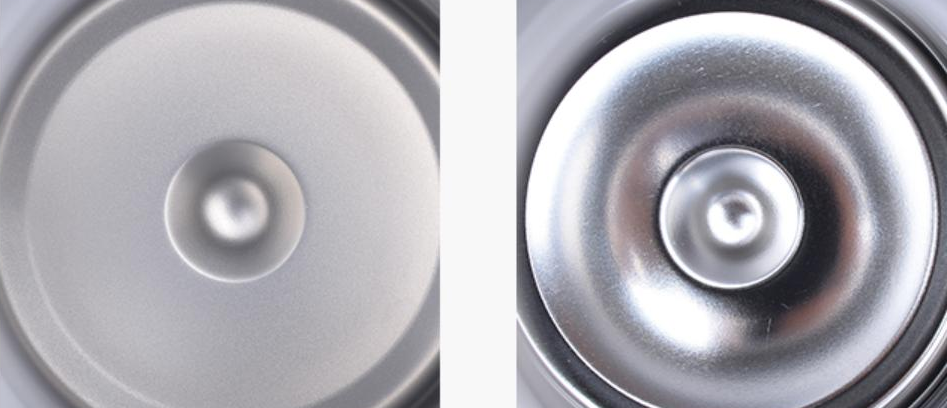
So, whether it’s 18/8, 304, or SUS 304, they all refer to the same proven, food-grade stainless steel. All three contain approximately 18% chromium and 8% nickel, delivering excellent resistance to corrosion, high durability, and long-term safety. The variety in naming simply reflects different countries’ industrial development paths and consumer labeling preferences:
- U.S.A, the focus is on numeric standardization (ASTM/AISI) for authoritative classification.
- Japan emphasizes meticulous standards and certification systems for consumer trust.
- Europe highlights transparency through chemical naming that clearly states composition.





